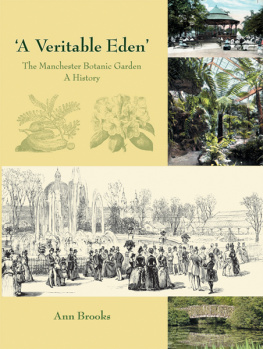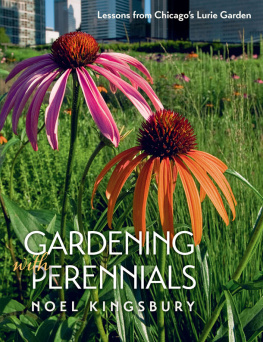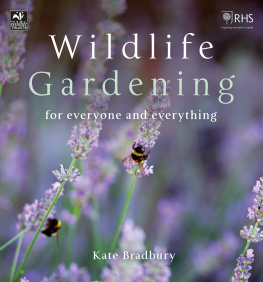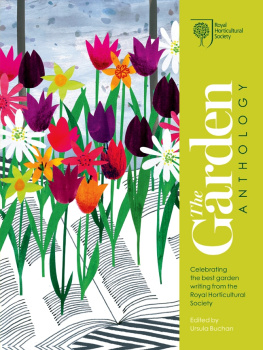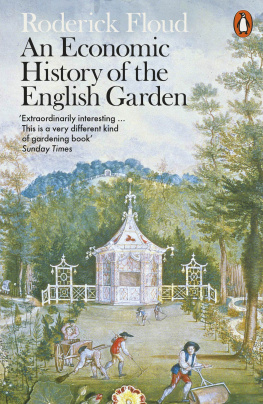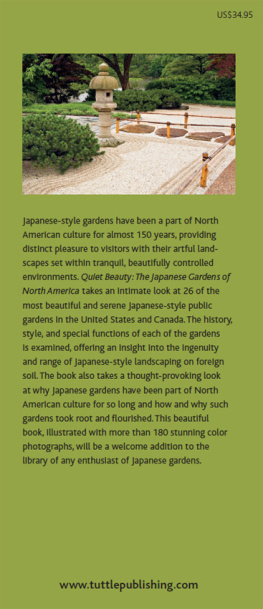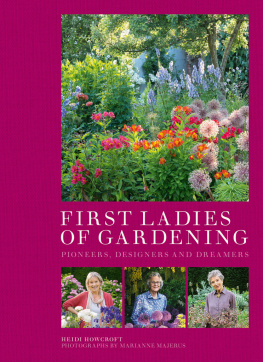
Entrance lodge of the Manchester Botanic Garden.
UNATTRIUTED (N.D.) PICTURE COLLECTION, CHETHAMSLIBRARY, MANCHESTER.

Windgather Press
is an imprint of
Oxbow Books, Oxford
Anne Brooks 2011
All rights reserved. No part of this publication may be reproduced,
stored in a retrieval system, or transmitted in any form or by any means
(whether electronic, mechanical, photocopying or recording) or otherwise
without the written permission of both the publisher and the copyright holder.
PRINT ISBN 978-1-905119-37-0
PDF ISBN: 9781905119554
EPUB ISBN: 9781905119530
PRC ISBN: 9781905119547
A CIP record for this book is available from the British Library
This book is available direct from
Oxbow Books, Oxford, UK
(Phone: 01865-241249; Fax: 01865-794449)
and
The David Brown Book Company
PO Box 511, Oakville, CT 06779, USA
(Phone: 860-945-9329; Fax: 860-945-9468)
or from our website
www.oxbowbooks.com
Printed in Great Britain by
Information Press, Eynsham, Oxfordshire
This book is dedicated to
Pat Hartwell and Hlne Williams
They taught me much about gardening and more about enjoying life

Stately spires of Delphiniums and Campanulas, painted by Josephine Gundry.
W. P. WRIGHT, HARDY PERENNIALS AND HERBACEOUS BORDERS (LONDON, 1912), 84.
List of Illustrations

All photgraphs by the author unless otherwise stated.
Colour drawings coloured by lizzie Holiday.
Abbreviations

| Chronicle | = | Manchester Chronicle |
| City News | = | Manchester City news |
| Guardian | = | Manchester Guardian |
| MBH | = | Manchester Botanical and Horticultural society |
Acknowledgements

Gardening had been my passion for many years: to be able to research this lost garden was a privilege and a pleasure. Professor Hannah Barker, Department of History, and Alan Ruff, Department of Landscape and Planning (retired), both University of Manchester, enthusiastically supervised my doctorial research and supported me through this publication process, thank you both. Hannah convinced me that you are never too old to start a new adventure. My family Jane Anson, Michael Brooks, Catherine Hughes, and John Tomczyk gave unfailing support. Thanks are due to friends Vivienne Blackburn, Margaret Gill, Caroline Holmes, Phillipa Rakusen and Evelyn Taylor as well as all others who gave their help in furtherance of my quest. A special thank you is due to my former co-author, Bryan Haworth, who gave me his unstinting analysis and insightful criticism on this my first solo work. Dr Pat Sherwood brilliantly proofread the original manuscript. Terry Wyke generously gave help on the mapping of Manchester. I would like to extend my thanks and appreciation for the support and encouragement I received from John Milner and the Committee of the Royal Botanical and Horticultural Society of Manchester and the Northern Counties.
I am very grateful to the staff of all the Archives and Libraries credited throughout the text. Special thanks go to Mike Powell and Fergus Wilde, Chethams Library, Manchester; Stella Butler and the staff at Special Collections, John Rylands University Library, Manchester; Emma Marigliano, The portico library, Manchester; and Graham hardy and the staff of The Library, The Royal Botanic Garden, Edinburgh. Thanks also go to the many archivists and Curators who looked to see if their collection contained Findlays Guide to the Manchester Botanic Garden 1857 [still missing].
I offer my particular appreciation to my editor, Dr Julie Gardiner, and to the staff at Oxbow Books who made the publishing process virtually painless, thank you all. Finally, but certainly not least, I thank my husband Egan, who served as chauffer, confidante and general factotum, for his support and encouragement when his wife began another career.

The Manchester Botanic Garden opened in 1831 and, after a chequered history including national fame and financial disaster, it in essence ceased to exist in 1908. The Society that founded it survived and still continues to work to the benefit of botany and horticulture in Manchester and the northern counties. Few in Manchester now know that the city was once home to a Botanic Garden with an international reputation: a garden that hosted some of the most prestigious horticultural exhibitions in the latter half of Victorias reign. The one remaining legacy is the faade is illustrated in the frontispiece. It stands forlorn on White City Way within a mile of the city centre and now graces the frontage of the White City Shopping Centre (2009). Some Mancunians remember when it was the entrance gate to a greyhound-racing stadium or have heard of the White City amusement park but the Garden itself is forgotten. This book is a history of that Garden and the Society that founded it.
Why should a vanished garden be a subject of significance, not only to Manchester but to the country as a whole? The Manchester Society and its garden was a prime example of a specific type of nineteenth-century endeavour: the subscription botanic garden. This was a national movement that aimed to bring the study of botany and horticulture within the reach of the subscribing members by adding a prestigious botanic garden to their town.

Former Entrance Gates to the Manchester Botanic Garden

Entrance to the Manchester Botanic Garden 1831. From The Mirror of Literature, Amusement and Instruction 536, vol. 19, Saturday 3rd March 1832, 129.
AUTHORS COLLECTION.
Botanic gardens have a long history and it is important to see the Manchester Garden in the context of this tradition as these subscription gardens differed in several respects from those that had preceded them. From the medieval monastery herbal garden the botanic garden progressed to the Renaissance Universities of Padua and Pisa where it became a medical teaching garden. In England the first such university botanic garden was at Oxford, founded in 1621. The society of Apothecaries founded their physic Garden at Chelsea in 1673, initially to teach their students to recognise medicinal plants. Moving away from the universities, the Royal Botanic Garden, Kew, founded in 1753 by Princess Augusta, mother of George III, followed in the tradition of private botanic gardens established by the aristocracy throughout Europe.
Next page
